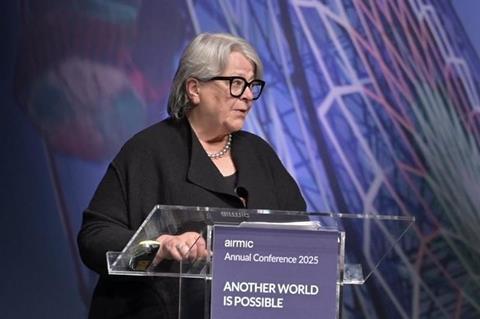With strong backing from Airmic and growing government engagement, the UK is now laying the groundwork for a domestic captive insurance regime, a move that could reshape risk financing strategies for British firms.
The UK government is decisively moving forward with plans to create an onshore regulatory regime for captive insurance, according to Airmic, which says the Treasury and Bank of England have already begun forming consultation groups and inviting industry participation.
Speaking at Airmic’s annual conference in Liverpool, CEO Julia Graham said: “We’ve been given a very special place with the Bank of England in terms of consultation… it was the Bank of England that told me that the language we’re using has… their approval, and that they’re happy for us to be bullish.”

Graham confirmed that planning is already under way. “We do expect it to happen. Otherwise, we wouldn’t be planning and wasting lots of time putting those plans in place.”
The developments follow the closure of HM Treasury’s consultation in February and Airmic’s comprehensive 22-page submission, which called for a class-based or graded regulatory regime comparable to models in Bermuda and Singapore.
Not an offshore rival, but a growth catalyst
Crucially, Airmic is positioning the potential UK regime not as a challenge to existing captive domiciles, but as a complementary option designed to unlock unmet demand. Graham said their survey of members showed 75% of organisations without a captive are now exploring one.
“Our captive survey told us that there are quite a lot of organisations who are thinking of having a captive, but they don’t currently have one… They might set up a separate one, for example, for things like employee benefits or other jurisdictions… this is a growth area and that’s how we have viewed it.”
That message also echoes Airmic’s February announcement, which stressed that members will “continue to make use of a wide range of captive domiciles” - but that a UK-based option would expand their strategic toolkit.
Airmic has also confirmed it is exploring what support infrastructure would be needed to ensure the regime is workable and well-understood. One possibility is forming a new voluntary association to support risk professionals entering the captive space.
“The model I think that is nearest would be the sidecar version that Singapore have used to launch their association… the Singapore one looks much more in line with what we might consider,” said Graham.
She confirmed that Airmic’s constitution already allows for such an initiative and would not require structural change or significant new investment.
Cautious optimism on timeline
Despite the momentum, Graham was careful to avoid over-promising on delivery dates, noting that legislative change is required and that “the Treasury themselves don’t know” the exact timeline. But she warned that delays could be costly.
“If you take too long, you’ll lose the momentum… it doesn’t necessarily take years.”
She said that the next signal is likely to come in the Chancellor’s Mansion House speech later this summer, which could set out legislative intention.
For UK-based risk professionals, a domestic captive regime could mark a pivotal shift in how organisations approach risk financing - particularly amid persistent insurance market hardening, growing interest in alternative structures, and gaps in coverage for complex or emerging risks.
Whether or not a UK captive will be right for every organisation, the direction of travel is clear: self-insurance is going mainstream. And risk managers would be wise to ensure they have the internal understanding, governance frameworks and data maturity to evaluate this evolving option when it arrives.
BLOG: Airmic Conference 2025 Daily News Summary

Stay tuned - live reporting from the Airmic Conference this week - all in one place
- 1
- 2
- 3
- 4
- 5
- 6
- 7
 Currently
reading
Currently
reading
Captives gain ground as Airmic hints at Treasury’s next move
- 9
- 10
- 11
- 12
- 13
- 14
- 15
- 16













































No comments yet